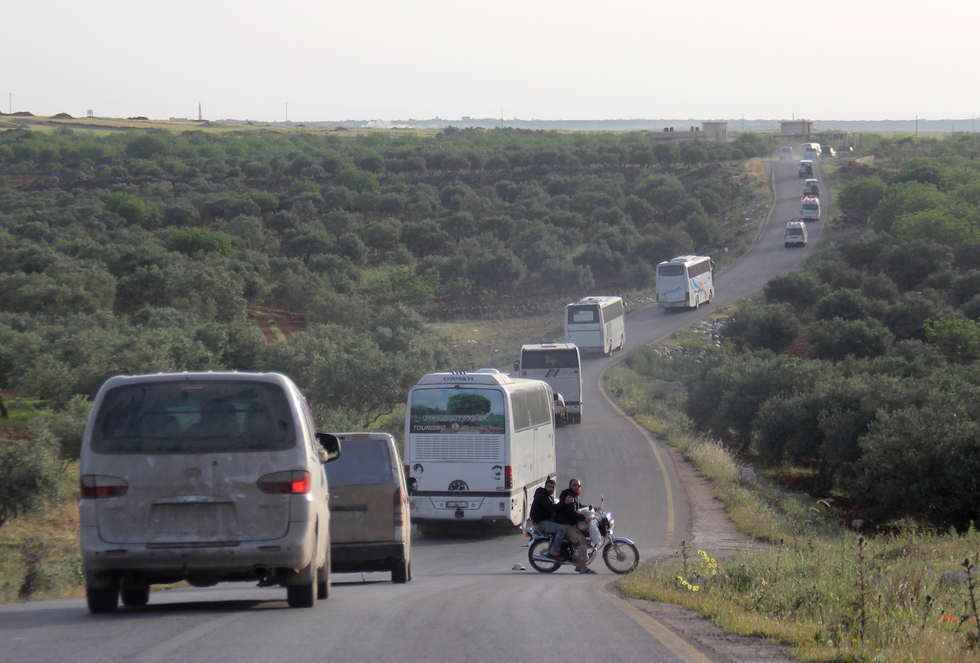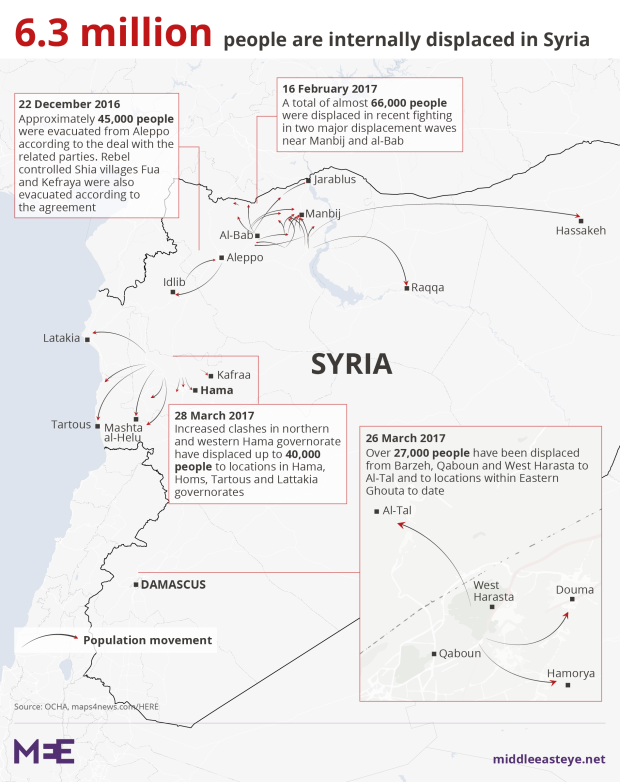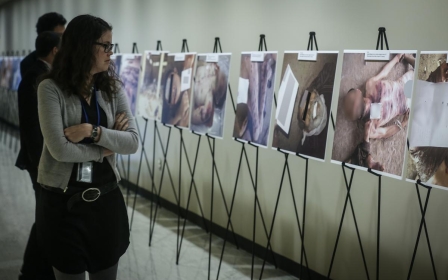Syria war: Evacuation deal reached for four besieged towns, says monitor

Four Syrian towns that have been under crippling siege for more than two years are to be evacuated under a deal reached late on Tuesday, a monitoring group said.
Residents of Zabadani and Madaya, two towns near Damascus under siege by government forces, will leave their homes in return for the evacuation of Fuaa and Kafraya, two mainly Shia towns in the northwest besieged by the rebels, the Syrian Observatory for Human Rights said.
Observatory chief Rami Abdel Rahman said the deal was brokered by rebel supporter Qatar and government ally Iran and that Islamist rebels in the northwestern province of Idlib had already signed on.
"The evacuations are not expected to begin until April 4 but, as a goodwill measure, a ceasefire for the towns came into effect overnight," Abdel Rahman said.
"It is calm there now," he added.
The evacuation is to take place in two stages - the first will see 8,000 evacuated from Fuaa and Kafraya and then 8,000 from Madaya and Zabadani on 4 April.
The four towns are part of an existing deal reached in 2015 that has seen aid deliveries and evacuations.Relief convoys to the four towns are always simultaneous and equal, with the same number of trucks entering at the same time.
A similar stipulation has applied for those being evacuated.
More than 320,000 people have been killed and millions more displaced since the Syrian conflict erupted with protests against President Bashar al-Assad in March 2011.
Multiple attempts to secure a nationwide ceasefire have faltered.
In December, rebel backer Turkey and government ally Russia brokered a cessation of hostilities that aimed to pave the way for more aid deliveries and peace talks, but fighting has continued across swathes of the country.
UN humanitarian chief Stephen O'Brien told the UN Security Council on 22 February that the failure to allow aid into the besieged towns had been "catastrophic, with over 64,000 civilians trapped in a cycle of daily violence and deprivation, where malnutrition and lack of proper medical care continue."
He said the situation was "compounded by the tit-for-tat arrangement between the four towns, which makes humanitarian access prone to painstaking negotiations that are rooted in political an opportunistic considerations, rather than humanitarian principles and obligations."
Evacuations have also taken place in other parts of Syria - hundreds of fighters and their families left the towns of Qudsiya and Al-Hama on the northern outskirts of Damascus, following a deal with the government in October.
The evacuation happened after the army gave community leaders an ultimatum to get several hundred fighters out of their towns or face a widescale assault.
The government says such amnesties are a "workable model to bring security and peace" after five years of civil war, but its opponents say forcing Sunni Muslim fighters and their families from their home towns could create new demographic frontiers and worsen sectarian tensions.
Siege Watch, an NGO project focusing on areas under siege - or at risk from siege - in Syria, has said that more than a million Syrians are suffering under siege in locations in Damascus, rural Damascus, Homs, Deir Ezzor, and Idlib governorates, while a further 1.3m are at risk from siege.
On Tuesday, Siege Watch added Mahajjah, a town of 25,000 in Daraa province to the watchlist.
"There are reports that the Syrian government has attempted a number of forced surrender agreements in Mahajjah so far," they stated.
"As in other besieged areas, civilians are suffering from the lack of access to basic supplies including food and medicine."
Middle East Eye propose une couverture et une analyse indépendantes et incomparables du Moyen-Orient, de l’Afrique du Nord et d’autres régions du monde. Pour en savoir plus sur la reprise de ce contenu et les frais qui s’appliquent, veuillez remplir ce formulaire [en anglais]. Pour en savoir plus sur MEE, cliquez ici [en anglais].





